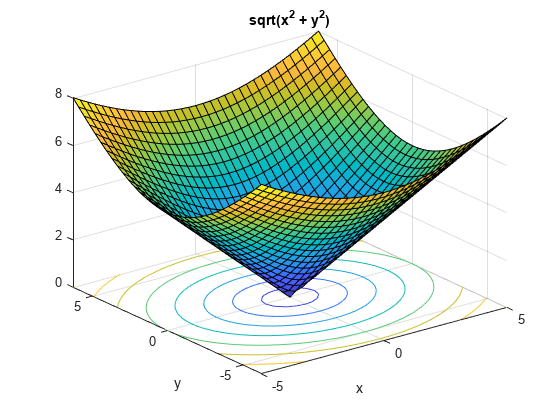ezsurfc
(Not recommended) Easy-to-use combination surface/contour plotter
ezsurfc is not recommended. Use fsurf instead. For more information, see Compatibility Considerations.
Syntax
Description
ezsurfc(
plots over the specified interval. To use the same interval for both
f,xyinterval)x and y, specify
xyinterval as a two-element vector of the form
[min max]. To use different intervals, specify a four-element
vector of the form [xmin xmax ymin ymax].
ezsurfc(
plots the parametric surface using the specified interval.funx,funy,funz,uvinterval)
ezsurfc(___, plots using
an n)n-by-n grid. Use this option after any
of the input argument combinations in the previous syntaxes.
ezsurfc(___,'circ') plots over a disk centered on
the interval.
ezsurfc( plots into
the axes specified by ax,___)ax instead of the current axes. Specify
the axes before any of the input argument combinations in any of the previous
syntaxes.
sc = ezsurfc(___) returns a graphics array that
includes the chart surface object and the contour object. Use sc
to modify the surface and contour plots after they are created. For a list of
properties, see Surface Properties and Contour Properties.

